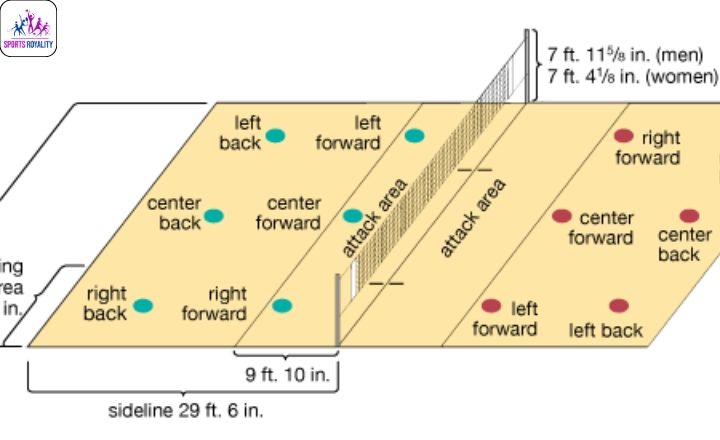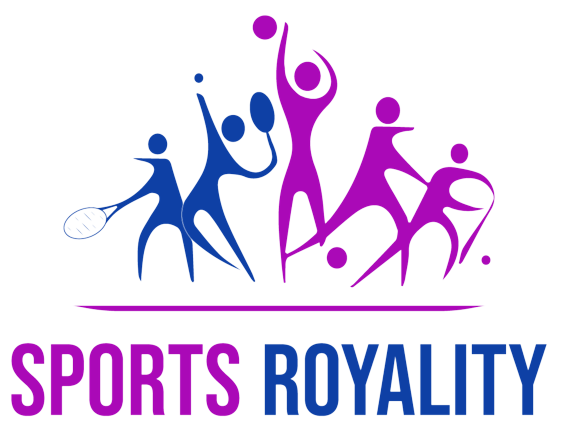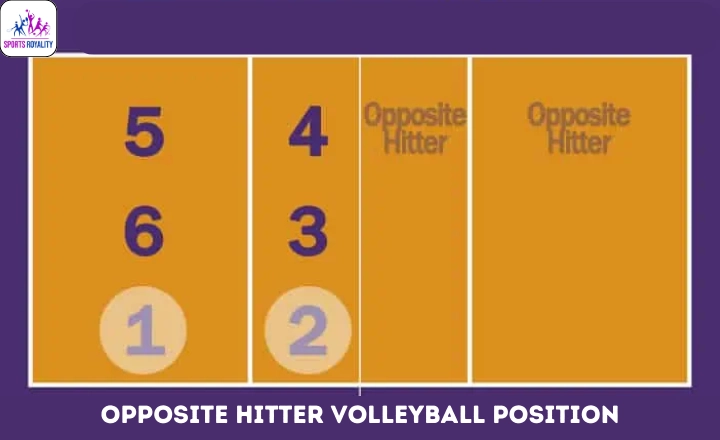You know everything about this exciting sport; think again. Some things are not as easy as they are looking. The opposite hitter volleyball position is a hidden gem that often goes unnoticed. But don’t let its name fool you; this position is anything but ordinary. From powerful attacks to strategic plays, the opposite hitter has a critical role in shaping the game.
This article will explore what makes the opposite hitter position unique and why it’s essential for any successful volleyball team.
What Does An Opposite Hitter Do In Volleyball?
The opposite hitter in volleyball, often referred to as the opposite, is a crucial player on any team. They specialize in attacking from the right-hand side of the court, creating a dynamic presence that complements their teammates’ plays. In the frontcourt, their primary objective is to be an explosive offensive force, consistently putting pressure on the opposing team’s defence.

A unique aspect of being an opposite hitter is their versatility and adaptability. They must possess excellent spiking skills and be able to attack from both high and quick sets, making it challenging for blockers to predict their next move. This unpredictability allows them to exploit gaps in the opponent’s defence or make decisive shots through blocks.
So, Being an opposite hitter demands a unique blend of offensive prowess and defensive versatility.
Opposite Hitter Volleyball Position- Don’t Usually Pass
Opposite hitters in volleyball are usually known for their attacking abilities rather than their passing skills. The position of an opposite hitter demands a strong focus on offence, as they are expected to deliver powerful spikes and score points for the team. Due to this specialized role, opposite hitters are often kept out of the passing lineup and positioned near the net for optimal attacking opportunities. This strategy ensures they can utilize their strengths and maximize their effectiveness as offensive weapons.
The responsibility of passing is typically assigned to outside hitters and liberos. Outside hitters possess all-around skills, which include both attacking and passing abilities, making them suitable candidates for securing accurate passes during a match. Liberos are specialize in defensive skills such as digging and receiving serves. Their job is to provide precise passes to set up successful attacks by their teammates.
Opposite Hitters Have To Block The Outside Hitter
Blocking in volleyball is a crucial defensive skill, and in the front court, the right-side hitter blocks the opposing team’s left-side hitter. This is no easy feat, as the left-side attacker is known for their powerful spikes and unpredictable shots. The daunting responsibility of stopping these potent attacks falls on the opposite hitter, who must rely on quick reflexes, agility, and strategic positioning to block their opponent’s hits successfully.
To effectively block the outside hitter, the opposite player must understand their opponent’s patterns and tendencies. By studying film footage or paying close attention during matches, they can identify key indicators such as body position or approach angles that suggest where an attack might be directed. When facing a left-side attacker who excels at hitting angles or finding block gaps, the right-side hitter can anticipate which court areas to cover.
Opposite Hitters Often Attack From The Back Row
Opposite hitters in volleyball have a unique role on the team. While they are primarily known for their attacking skills, it is often overlooked that they also play a crucial role from the back row. They regularly attack from the back row, making them versatile and unpredictable assets for any team.
An advantage of having opposite hitters attack from the back row is that it adds another element of surprise to their offensive game. When an opposite hitter approaches to attack from the front row, blockers are ready and waiting to defend against them. When they attack from the back row, their hits come at different angles and speeds, catching defenders off guard and increasing their chances of scoring points.
Opposites Also Have To Serve & Defend
In attacking, opposites also have responsibilities in serving and defending. Serving can be challenging as they must balance power and accuracy while aiming for strategic areas on the court. These hitters must also be proficient defenders as they are often targeted by opposing teams due to being perceived as weaker defensively than other positions. Their ability to dig attacks and successfully receive serves can make a significant difference in keeping rallies alive and providing opportunities for their team.
What Are The Strengths Of A Good Opposite Hitter?
The scariest thing about playing against a super dominant opposite hitter in volleyball is their incredible strengths. Their height gives them an advantage in blocking and spiking, as they can easily reach over the net and slam the ball down with power. This makes it extremely challenging to defend against their attacks and often leaves teams struggling to develop effective counterstrategies.
Not only are opposite hitters taller, but they are also usually stronger than other players on the court.
Their physical strength allows them to generate greater power behind each hit, making it harder for the opposing team to dig or receive their spikes.
Also, stronger arms enable them to deliver quick, unpredictable shots that catch defenders off guard.
These qualities make a skilled opposite hitter almost unstoppable and constantly force opponents to adapt their game plan.
Great Opposites Are Often Left-handed
Great opposites are often left-handed hitters in the world of volleyball. This is because being a left-handed hitter on the right side of the court provides a unique advantage. As a right-side hitter, your entire torso becomes available to hit from, allowing for greater reach and power. With your dominant hand at the back, you can explode off the ground and unleash powerful cross-court shots that catch defenders off guard.
Hitting from the right side also opens up new angles and opportunities to outsmart your opponents. While most blockers are used to defending against right-handed hitters approaching from the left side, they may struggle when faced with a left-handed hitter attacking from the opposite end. This change in perspective can become an advantage for skilled right-side hitters who know how to exploit these gaps in defense by aiming their hits toward hard-to-reach areas of the court.
Opposite Hitters Are Usually Really Tall
These hitters are known for their incredible athleticism and power in volleyball, but one characteristic that often sets them apart from other positions is their towering height. Standing at an average of 6 feet 5 inches or taller, these athletes command attention on the court with their presence alone. The height advantage allows them to reach higher for attacks at the net and provides a greater angle to outsmart blockers and deliver devastating kills.
The height advantage of opposite hitters offers a multitude of benefits on offence. Their long limbs and high leaping ability allow them to easily hit over or around blockers, making it extremely difficult for opposing teams to defend against their attacks. Tall opposite hitters have a significant advantage in blocking. They can reach across the net more effectively, closing passing lanes and forcing opponents into making errors.
Being tall as an opposite hitter isn’t just about physical advantages; it also brings strategic opportunities. With the added height, these players have better visibility over the block and can easily spot gaps in the defence. This enables them to make split-second decisions during gameplay by adjusting their shots or placing precise hits where defenders are less likely to be positioned.
Great Opposites Are Strong, Powerful, and Athletic.
The power of opposites is truly remarkable. In athleticism, great opposites form a force to be reckoned with. Take, for example, the matchup between speed and strength. While speed allows an athlete to cover ground swiftly, strength enables them to push through resistance easily. Combining both qualities can create an unstoppable force in sports such as track and field or football.
The clash between agility and endurance is another prime example of great opposites in athletics. The ability to swiftly change direction and react quickly requires exceptional agility, while endurance tests an athlete’s stamina over long periods of intense activity. Combining these traits allows athletes to dominate in sports like basketball or soccer, enabling them to outmanoeuvre opponents and maintain high-performance levels throughout games or races.
Skillfully balancing precision and adaptability is another powerful combination found in successful athletes. Precision ensures accuracy in movements such as shooting a basketball or throwing a dart with pinpoint accuracy. At the same time, adaptability allows athletes to adjust their strategies on the fly when faced with unforeseen challenges during the competition. Together, these opposing skills create adaptable perfectionists who can excel regardless of the circumstances they find themselves in.
Is Opposite Hitter A Good Position In Volleyball?
The opposite hitter position in volleyball is often overlooked and underappreciated. While the outside hitters and setters may steal the show with their flashy spikes and precise sets, the opposite hitter plays a crucial role in the team’s success. They hold immense importance in both offence and defence.
The opposite hitter adds versatility to a team’s offensive strategies. They are typically responsible for attacking from the right side of the court, offering a different angle that can catch defenders off guard. Their ability to hit powerful cross-court shots or execute well-placed tips can keep opponents guessing and create opportunities for their team to score points.
The opposite hitter also plays a major role in blocking on defence. By effectively closing off parts of the net with their blocks, they force opposing hitters into making risky shots or provide an extra layer of defence against strong attackers. This not only helps prevent points from being scored by opponents but also boosts confidence within their team.
How Important Is The Opposite Hitter?
The opposite hitter holds significant importance in volleyball. Their contributions on offence and defence make them indispensable assets to any team aiming for success on the court. So, let’s not underestimate this position; instead, let’s appreciate everything that makes it vital to victory in this thrilling sport.
Conclusion
The opposite hitter volleyball position is a crucial role that requires a combination of skills and versatility. Opposite hitters are responsible for both offensive and defensive plays, making them an essential part of any team. Their ability to attack from various angles and block effectively adds depth and unpredictability to the game. Their role as secondary setters allows for quick plays and strategic setups.
Aspiring volleyball players should consider mastering the opposite hitter position to enhance their overall game and contribute significantly to their teams’ success. So, if you’re looking to take your volleyball skills to the next level, don’t underestimate the importance of the opposite hitter position and start practising today!
FAQs
How many opposite hitters does a volleyball team have?
A volleyball team typically have two opposite hitter. One is on the court, and the other one is on the bench.
Is the opposite hitter and outside hitter the same?
No, the opposite hitter and outside hitter are not the same positions in volleyball. While both positions are typically located on the left side of the court, they have different roles and responsibilities.

